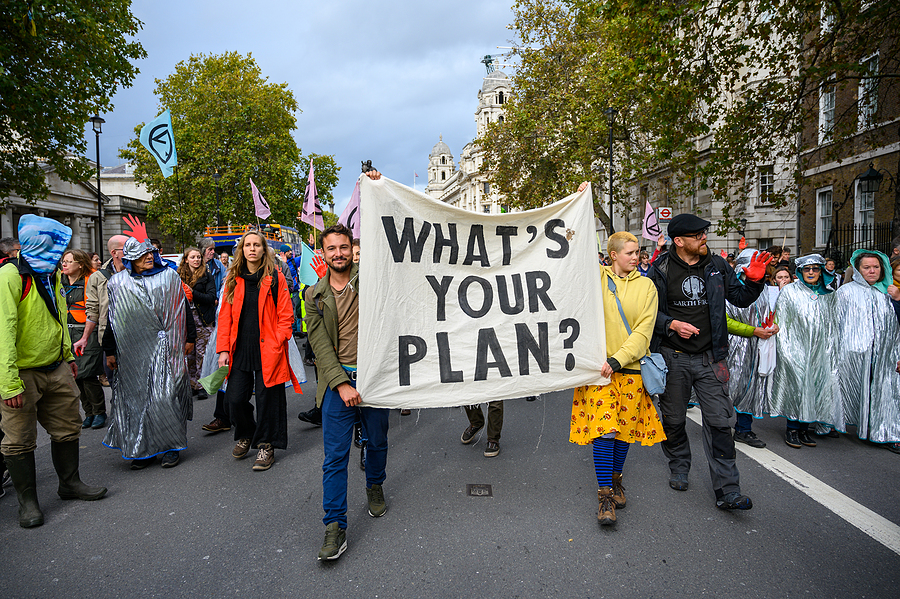
Six Secrets of Earned Media Stardom
April 20th, 2021 Posted by Emergent editorial relevance, Marketing Strategy, media placement, media relations, media strategy, Public Relations, publicity, social media marketing 0 comments on “Six Secrets of Earned Media Stardom”Path to game-changing glory for your brand
You may have witnessed first-hand the remarkable power of earned media, otherwise known as publicity, to quickly change the trajectory of a company’s business. When a story about a brand or business catches fire in earned channels, it can become a cultural phenomenon, moving the needle in ways that paid outreach could never hope to accomplish.
Ask any CEO or CMO and there will be a lingering interest in securing a major media piece in a blue-chip publication, digital news channel or TV news property. A top story in the Wall Street Journal. Cover of TIME magazine. TODAY show interview. Feature at Fast Company or Wired. Bloomberg news in-depth report. A Buzzfeed distribution build.
This level of respected media attention most often is not a happy accident. It is the outcome of a considered strategy conducted with skill, diligence and persistence. After many years of participating in earned media outcomes at this level, we have distilled the primary ingredients for success into six facets of media orchestration. Done in concert, this eco-system offers the roadmap to successful results.
The caveat: it is the integration of these pieces that helps achieve the objective. Taken apart and separated, the hill to climb gets much steeper and the outcomes less certain – and could result with your brand being relegated to a mention in a story placed by a brand that made the effort to build the piece properly.
Non-transactional media attention (not paid for like advertising) can’t be ordered up from central casting or invoked as a magical mandate for the PR team. The approach must remain ever respectful of the environment it sits in – an arena where reporting, newsworthiness, editorial relevance and objectivity hold sway. There are rules to understand and follow.
Six Red Carpet Moves to the Editorial Media Spotlight
- Casting the larger story and bigger picture context where the brand has relevance
Unless you’re running a trillion-dollar juggernaut company where every move you make is likely to be in the headlines, the fundamental starting point for earned media is driven by strength of the story concept. What larger issue is your brand/category/industry connected to, such as an identifiable link to cultural shift or a sea change in public sentiment? Is there an over-arching trend getting traction or an emerging social issue where the brand has a role? In other words, your internal story isn’t the only part of the story – rather it’s how your internal story connects with a larger issue, trend or cultural moment. Here are some examples:
- Food choice linked to impacts on climate threat.
- Pandemic influence on the role of health and wellness.
- Decline of brand trust and rise of transparency.
- Global food scarcity connected to new technology solutions.
- Human need for control, safety and security amidst unseen and lethal dangers.
- Connection of pet ownership to elevating human health and wellness.
- Presence of food fraud/mislabeling in the midst of consumer demand for honesty and authenticity.
- Emergence of new food making technologies in an era of back-to-the farm preferences.
- Impact of COVID 19 conditions/isolation on mental health and lifestyle behaviors.
- Sea change of preference for higher quality, fresh food on legacy processed food making.
- The wallop of sustainability demands on supply chains and agriculture practices.
The key is targeting a larger scope issue where the brand has a role and a voice. This creates context for a bigger story that offers greater depth than a simple product announcement.
2. PR media team knowledge matters greatly – of consumer, product, company and category details, methods and behaviors
Earned media is a bespoke business driven by one-on-one contact with media gatekeepers. The question you are answering in each interaction with a decider: are you showing up as a credible source for well-researched story material?
To do this with skill the PR media team must know everything about the company’s products, processes, standards, beliefs, behaviors, strengths. Have they done the homework such that literally any question can be fielded fully and knowledgeably?
The team must know the details of the category where the business competes, what other brands are doing, their approach to product solutions and different consumer cohorts served by different brands.
In short, the PR media team needs to know as much about the business as the CMO or CEO. This requires a trusted relationship where the PR media experts are fully in the know of what’s going on behind the corporate curtain.
3. Editorial syntax deployed in all materials created for media consumption
All various backgrounding materials, fact sheets and releases built for reporter outreach and pitching purposes should be created with an editorial voice. They should be devoid of shameless self-promotion, unsubstantiated claims, flowery quotes, unverified marketing assertions, hyperbole and corporate speak. Everything should be cast in the context of how a reporter would likely approach the story.
If it walks and talks like an editorial story, then it’s a story. Anything else is deemed promotion and won’t survive the vetting process – and instead is likely viewed as more appropriate for a paid ad placement.
Credibility of the PR media team as a reliable source is at stake here. Proper construction of the materials signals understanding of what reporters, producers are doing and how a story should (will) be constructed.
4. Importance of third-party quote-able sources
There’s no such thing as a story where the brand is the only quoted source. When the story is built around a larger context of an issue or trend, it is vital that credible subject matter experts are enlisted to add validation, dimension and texture to the story premise.
If the PR team doesn’t make the effort to assemble expert sources, the reporter or editor will do it separately – which could take the story off track or add factors that capsize the desired messaging outcome. The ability to provide the relevant sources provides an opportunity to help influence the shape of the narrative, and to verify key essential pieces of the story arc.
If the story you’re building centers on the impact of food choice on climate change, having experts on climate impact and agriculture is fundamental to the story premise. This again signals to the media deciders that the PR team has done their homework. The expert verification of story elements provides greater confidence to editors that the details of the piece will hold up under scrutiny.
5. Deploying vertical media build
Big, bold feature media story placements with blue chip media properties don’t just fall like manna from heaven. There is a ladder to climb as the story moves up higher in the media food chain. When the story is placed first in vertical media settings relevant to the business category where the company competes, it creates a credible environment and testing ground where the story elements are played out.
Coverage in vertical media provides the larger, national media outlets confidence that the story is:
- Important and coverage-worthy
- Has impact on the business/industry overall
- Creates a structure example of how the story flows
- Demonstrates the authority, knowledge and value of quoted sources
National media do not consider industry verticals to be competitive so the fact you can provide links to these placements serves as supporting, credible evidence of the storyline, not a weakening of the value of the news they break.
Of note, arranging exclusives can at times be advantageous on the path to wider recognition. Some media like Bloomberg News are bellwethers for others and a major story breaking there will feed into other outlets creating a viral effect.
6. Experience of the players involved
If you have enough time in the saddle working with reporters and editors you come to appreciate the dynamics of how they do what they do. This pays benefits in direct conversations with deciders, the sequence of events once a reporter expresses interest, and the details of how materials are worded and constructed.
There is simply no substitute for hands on experience in this endeavor. The more seasoned the PR media team is, the better this goes. Until you have experienced “no” a few times you just don’t acquire a sensitivity for the mechanics and rules of how earned media works.
This isn’t just about who you know. Relationships can be beneficial, but the real acid test is the quality of the story the PR Team crafts and presents, and how well it is supported with credible source material (studies, reports) and reliable expert sources. Reporters know who the fluff pitchers are. They are more likely to devote their time and attention to brands represented by PR media teams demonstrating a commitment to journalistic standards and newsworthy reporting.
This isn’t easy but it will be rewarding
It takes patience and hard work to execute successfully in the earned media world. Done correctly and with skill, the risk of failure is vastly reduced because the story has obvious merit and the work to serve it up properly has been done.
- If you’re patient to let these various layers play out, you’ll witness how the coverage expands to a point where it can eventually virally catch fire.
If you’re looking for support and guidance in an earned media setting, use this link to start an informal conversation with us.
Looking for more food for thought? Subscribe to the Emerging Trends Report.
Bob Wheatley is the CEO of Chicago-based Emergent, The Healthy Living Agency. Traditional brand marketing often sidesteps more human qualities that can help consumers form an emotional bond. Yet brands yearn for authentic engagement, trust and a lasting relationship with their customers. Emergent helps brands erase ineffective self-promotion and replace it with clarity, honesty and deeper meaning in their customer relationships and communication. For more information, contact [email protected] and follow on Twitter @BobWheatley.





